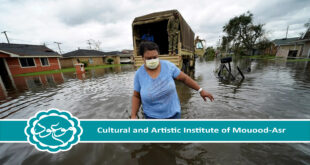Perhaps the most stunning example of this is that during the 2000s, as the evidence for human-caused climate disruption became more compelling, the percentage of the population that rejects that science increased. Why would people who, in most every other aspect of life accept without question the results of peer-reviewed science, reject the overwhelming consensus of climate scientists in this case? Some have theological reasons, and for others perhaps it is simply easier to disbelieve than to face the implications. But it’s clear that the well-funded media campaigns using these propaganda techniques to create doubt have been effective. [3]
Even those of us who try to resist it often can’t help but be drawn into parts of the delusion; it’s difficult to keep track of, let alone understand, all of the fronts on which we are facing serious challenges to a just and sustainable future. As a culture, these delusions leave us acting as if unsustainable systems can be sustained simply because we want them to be. Much of the culture’s story-telling — particularly that which comes through almost all of the mass media — remains committed to maintaining this delusional state. In such a culture, it becomes hard to extract oneself from that story. Singer/songwriter Greg Brown captures the trajectory of this delusional revolution when he speculates that one day, “There’ll be one corporation selling one little box/it’ll do what you want and tell you what you want and cost whatever you got.” [4]
In summary: The agricultural revolution set us on a road to destruction. The industrial revolution ramped up our speed. The delusional revolution has prevented us from coming to terms with the reality of where we are and where we are heading.
Resistance
Even if a revolutionary program is not viable at the moment, strategies and tactics for resistance are crucial. To acknowledge that the social, economic, and political systems that have produced this death spiral can’t be overthrown from the revolutionary playbooks of the past does not mean there are no ways to affirm life. We face planetary problems that seem to defy solutions, but the US empire and predatory corporate capitalism remain immediate threats and should be resisted. An honest, radical assessment of our situation doesn’t mean giving up, but it requires us to be tough-minded. We need to understand which resistance strategies and tactics are likely to be most productive at this moment in history.
To advance that discussion, let’s think back to February 15, 2003. Many of us on that Saturday participated in actions in opposition to the planned US invasion of Iraq. It was an exhilarating day, the largest coordinated political protest in the history of the world. At least 10 million people participated across the globe, with a clear message for US policymakers: The invasion being planned is illegal and immoral, and we reject not only this war but your right to use violence to achieve your political and economic goals. I was the emcee of the event in Austin, and I remember being amazed at the thousands who gathered at the Texas Capitol, stretching back so far that our loudspeakers couldn’t reach the entire crowd.
We had a compelling message, rooted in international law, political principles, and moral values. We had huge numbers of people. We had an international presence. And none of it mattered; the war came. Why could US policymakers ignore us without consequence? First, those elites knew that a large segment of the public either actively supported the war or would passively support almost any war that was out of sight/out of mind. Second, they knew that when that day of protest was over, most of the people in the streets would go home, satisfied with their public statement and unlikely to go beyond that polite expression of dissent. Political movements are most potent when people are willing to take risks; without a large number of such people, the powerful know they can wait out protests.
For most people, attending an anti-war rally posed no risk. Immigrants and people in targeted groups (Arabs, South Asians, Muslims) had reason to feel threatened, but people who look like me — with only rare exceptions — don’t face serious repression in the United States today for engaging in peaceful political activity, though that can change quickly. What were most of us willing to do beyond attending a rally in opposition to a war being planned? A month later, when the war came, we got a partial answer. The crowd for the standing call to come to the Capitol when the bombs fell was at best one-fourth of the pre-war rally. Most of the people who came on February 15 weren’t willing to come out in public once the nation was at war; even that trivial a risk was too much.
I could be cocky and say that in 2003 I was willing to risk my job, my physical safety, even my life to stop the war. It might be true; I certainly felt the urgency of the moment. But the question is moot, because at that time there was no strategy for taking such risks. These decisions about risk are made by individuals but in the context of options developed collectively, and the movement I was part of had not discussed such options.
So, when certain resistance tactics don’t work as part of a strategy that’s not clearly articulated, it’s time to rethink. I have no grand strategy to offer, and I am skeptical about anyone who claims they have worked out such a strategy. But I am reasonably confident that this is not a mass-movement moment, not a time in which large numbers of Americans are likely to engage in political activity that challenges basic systems of power and wealth. I believe we are in a period in which the most important work is creating the organizations and networks that will be important in the future, when the political conditions change, for better or worse. Whatever is coming, we need sharper analysis, stronger vehicles for action, and more resilient connections among people. In short, this is a cadre-building moment.
Although for some people the phrase “cadre-building” may invoke the worst of the left’s revolutionary dogmatism, I have something different in mind. For me, “cadre” doesn’t mean “vanguard” or “self-appointed bearers of truth.” It signals commitment, but with an openness to rethinking theory and practice. I see this kind of organizing in some groups in Austin, Texas, where I live. Not surprisingly, they are groups led by younger people who are drawing on longstanding radical ideas, updating as needed to fit a changing world. These organizers don’t have all the answers, and I don’t agree with some of the answers they do have, but I am drawn to them because they recognize the need to dig in.

 Mouood Mouood English Edition
Mouood Mouood English Edition



